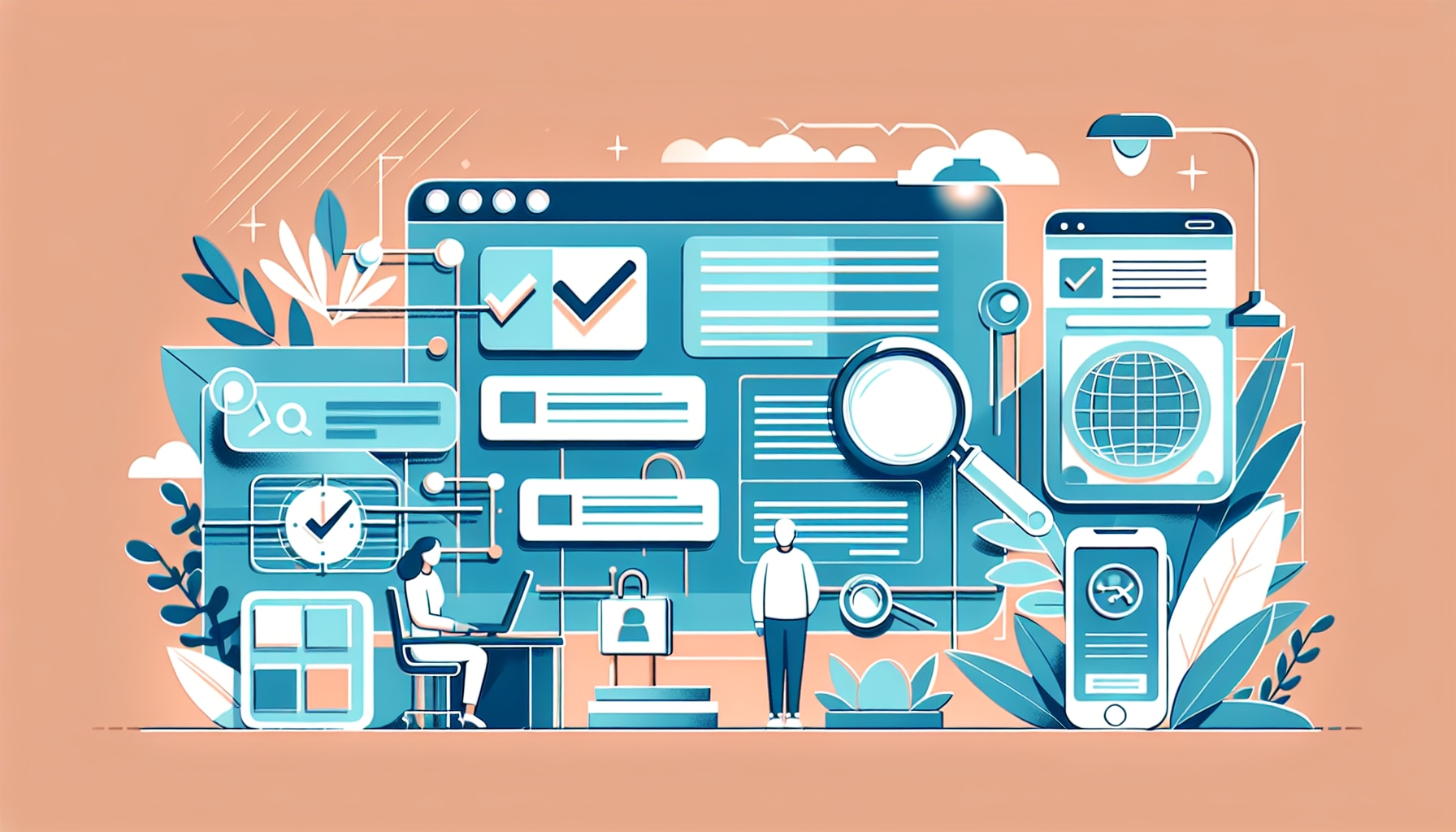· Athlure Specialist · website speed · 9 min read
Website Accessibility: Ensuring compliance for inclusive experiences
Learn about Website Accessibility and Ensuring compliance for inclusive experiences in simple, easy-to-follow steps. Get practical tips to improve your website.

Did you know that about one billion people in the world live with some form of disability? That’s a lot of people! Now, think about the internet. It’s like a huge library, shopping mall, and meeting place all rolled into one. But what if you couldn’t use it because the doors were too small, the words too hard to read, or the stairs too steep to climb? That wouldn’t be fair, right?
Website accessibility is about making sure everyone can use websites, including people with disabilities. It’s like adding ramps to those stairs or making doorways wider. When websites are built to be accessible, it means that people who have trouble seeing, hearing, moving, or learning can still do everything online, like shopping, learning, and talking to friends.
In this blog post, we’re going to learn about why it’s important to make websites easy for everyone to use. This is not just about being nice; it’s also a rule that websites have to follow so that no one is left out. You’ll find out what you can do to check if your website is good to go for everyone and how to fix it if it’s not.
Get ready to discover how you can make the internet a place where everyone is welcome and can join in the fun!
Quick Navigation:
Understanding Website Accessibility
What Is Website Accessibility?
Imagine you’re at a playground, but some of the kids can’t play because the equipment is too high to reach or too difficult to use. Website accessibility is like fixing the playground so everyone can play. It means making websites easy to use for all people, even those with disabilities. This could mean:
- People who can’t see well might use tools that read the website out loud.
- Others who can’t use a mouse might need to use the keyboard to move around the site.
- Someone who finds it hard to hear might need captions for videos.
When we make websites with these things in mind, it’s like making sure there is something fun for every kid at the playground.
Why It Matters
Website accessibility is important for a few reasons:
- It’s fair: Just like how ramps help people in wheelchairs get into buildings, accessible websites help everyone get the information they need.
- It’s smart: If more people can use your website, that means more friends to play with. For a business, that means more customers.
- It’s the law: In some places, there are rules that say websites need to be accessible to everyone.
Here are some tips to make your website a place where everyone can join in:
- Use colors that are easy to see, like black text on a white background.
- Make sure someone can use the site with just a keyboard.
- Add descriptions to pictures so people who can’t see them know what they’re about.
- Make your words clear and easy to understand.
Making your website accessible is like making sure everyone can come to your birthday party. It’s the right thing to do, and it means more fun for everyone. So, let’s make sure our websites are places where everyone is included and can have a good time!
Next, let’s learn about how to check if your website is a welcoming place for everyone.## Legal Requirements for Accessible Websites
The Americans with Disabilities Act (ADA)
The ADA is a law that helps protect people with disabilities. It makes sure they get the same chances as everyone else. This law is not just for buildings and parks. It also covers websites. Think of it like making sure there’s a ramp for someone who uses a wheelchair. But for websites, it means making the site something everyone can use. Here’s what businesses need to know:
- If you have a business, your website should let people with disabilities do things like shop, learn, or sign up for events.
- Your website should work for everyone, whether they have trouble seeing, hearing, or moving around.
Web Content Accessibility Guidelines (WCAG)
WCAG is like a big checklist. It has tips on how to make your website easy for everyone to use. Think about when you play a game. Instructions help you understand how to play. WCAG is like instructions for your website. Here are some things it suggests:
- Use text that’s easy to read and understand.
- Add descriptions for pictures so people who can’t see them know what’s there.
- Make sure someone can use the website with just a keyboard.
Not following these rules can be a big problem. If your website isn’t easy for everyone to use, you might have to go to court. Also, if people can’t use your website, they won’t visit it. That means you could lose customers.
Helpful Tips:
- Always use clear, simple words on your website.
- Break up information into small parts. It’s easier to understand that way.
- Try using your website with your eyes closed. This can show you how someone who can’t see might experience it.
Remember, making your website accessible is not just about following rules. It’s about giving everyone a fair chance to use your website. If you do this, more people can enjoy what you offer. That’s good for them and good for your business.
Next, let’s look at how you can check if your website is easy for everyone to use!## Best Practices for Accessible Web Design
Making websites easy for everyone to use is important. Think about how everyone, even people with different abilities, can enjoy and use your website. Here are some tips to help make your website a friendlier place for all.
Creating Inclusive Content
- Use alt text for images: When you put a picture on your website, also write a short description of it. This helps people who can’t see the picture understand what’s there. For example, if you have a photo of a dog, the alt text could say “A brown dog playing with a ball.”
- Provide captions for videos: If you have a video, make sure there are words on the screen that tell what is being said. This helps people who can’t hear the sound still get the information.
- Ensure text can be resized: Some people need bigger text to read comfortably. Make sure your website lets them make the text larger without messing up how the information looks.
Designing for Diversity
When making your website, think about all the different people who might visit. Some might not see well, hear well, or move their hands easily. Here’s how you can help:
- Colors and contrasts: Use colors that stand out from each other. This helps people who have trouble seeing colors or who have blurry vision.
- Easy to click: Make buttons big enough and not too close to each other. This way, everyone can click on them, even if they don’t have a steady hand.
- Keyboard friendly: Some people can’t use a mouse. Make sure they can use the keyboard to go through your website.
Testing your website with different people is a great way to find problems. Ask people with disabilities to try your site and listen to their advice. They’ll tell you what works and what doesn’t.
By following these tips, everyone can have a better time on your website. Remember, the internet is for everyone, and your website can show that by being easy to use for all. Keep learning and improving, and your website will be a place where everyone feels welcome.## Tools and Resources for Compliance
Making sure everyone can use your website is important. Just like buildings have ramps for wheelchairs, websites need tools to help people with different needs. There are special tools and people who know a lot about making websites easy for everyone to use.
Automated Accessibility Testing Tools
Imagine you have a robot that can check if doors in a building are wide enough for wheelchairs. For websites, we have smart tools that work like that robot. They look at your website and find problems that might make it hard for some people to use. Here are some tools you can use:
- Screen reader software: It reads out loud what’s on the screen. It helps people who have trouble seeing.
- Accessibility checkers: These are like helpers that look at your website and make a list of what you need to fix.
These tools are good at finding easy-to-fix problems. But they might not catch everything. That’s where experts come in.
Accessibility Consultants and Services
Sometimes, you need a person who knows a lot about making websites work for all kinds of people. These experts are like guides in a big park. They know all the paths and can keep you from getting lost. Here’s what they do:
- They check your website even better than the smart tools.
- They know the rules for making websites easy for everyone to use.
- They teach you how to keep your website friendly for all users.
It’s a good idea to ask these experts for help. They can make sure your website is welcoming for everyone.
To keep your website working well for all visitors, remember to:
- Use the tools to check your site often.
- Talk to the experts if you’re not sure what to do.
- Keep learning about new tools and tips.
Websites change, and new tools come out all the time. Staying up-to-date will help you make sure your website is always ready to welcome everyone. Now, let’s move on to understand how website accessibility impacts your business and visitors every day.
Key Takeaways
Making your website easy for everyone to use is important. It helps people, including those with disabilities, find what they need. This is called website accessibility. When you make your site accessible, you show you care about all visitors. It’s also good for your business. It can keep you out of trouble with the law.
Here are some simple steps to make your site better for everyone:
- Use text that is easy to read. Make sure the words on your website are not too small and the colors are easy to see.
- Add descriptions to pictures and videos. This helps people who can’t see well understand what’s on your site.
- Test your website with tools that check if it’s easy to use. You can find these tools online.
Remember, making your website better for everyone is a good thing to do. When you work on your website, think about all the people who will visit. You can make a difference for them. Keep working at it, and you’ll make your website great for everyone!



